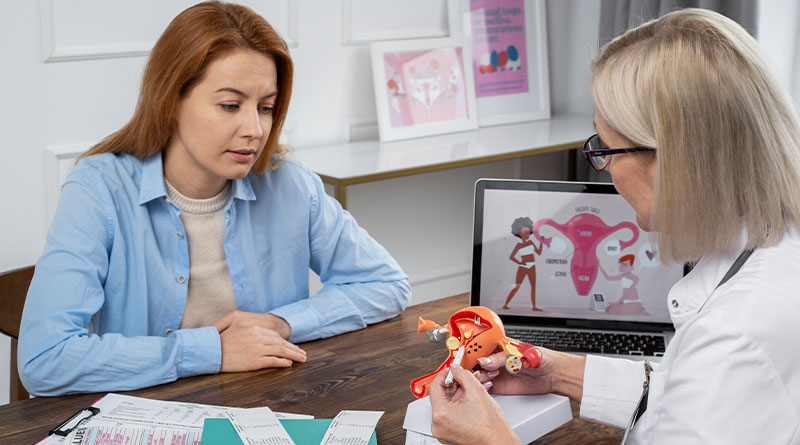Vaginal yeast infections are a common yet uncomfortable condition that affects many women. If you’ve ever experienced itching, irritation, or unusual discharge, you might have had a yeast infection.
But what exactly causes it, and how can you prevent or treat it? In this guide, we’ll break down everything you need to know in simple, easy-to-understand terms.
Understanding Vaginal Yeast Infections
A vaginal yeast infection, also known as vaginal candidiasis, is caused by an overgrowth of Candida albicans, a type of fungus that naturally lives in the vagina. Normally, the body’s immune system and good bacteria (like Lactobacillus) keep yeast levels in check. However, when the balance is disrupted, yeast can multiply rapidly, leading to infection.
What Causes a Vaginal Yeast Infection?
Several factors can trigger a yeast infection, including:
- Antibiotic Use: Antibiotics kill harmful bacteria but can also eliminate beneficial bacteria, leading to yeast overgrowth.
- Hormonal Changes: Pregnancy, birth control pills, and hormone therapy can disrupt vaginal flora.
- Weakened Immune System: Conditions like diabetes, HIV, or chronic stress can lower immunity, making infections more likely.
- High Sugar Intake: Yeast feeds on sugar, so a diet rich in sugary foods may contribute to an infection.
- Tight or Non-Breathable Clothing: Wearing damp or tight-fitting clothing creates a warm, moist environment where yeast thrives.
- Douching and Scented Products: These can upset the vagina’s natural pH balance, making it easier for yeast to grow.
Symptoms of a Vaginal Yeast Infection
Common symptoms include:
- Intense itching and irritation in the vaginal area
- Redness and swelling of the vulva
- A thick, white, cottage cheese-like vaginal discharge
- Burning sensation, especially during urination or intercourse
- Soreness and discomfort
If symptoms persist or worsen, consult a healthcare professional to rule out other conditions like bacterial vaginosis or sexually transmitted infections (STIs).
How Is a Vaginal Yeast Infection Diagnosed?
A doctor can diagnose a yeast infection by:
- Reviewing your symptoms and medical history
- Conducting a pelvic exam
- Taking a sample of vaginal discharge for microscopic examination
If you experience frequent yeast infections (more than four times a year), your doctor may recommend additional tests to identify underlying causes.
Treatment Options for Vaginal Yeast Infections
Fortunately, yeast infections are treatable with various methods:
1. Over-the-Counter (OTC) Antifungal Medications
OTC treatments like creams, suppositories, and tablets (e.g., miconazole, clotrimazole) are available at most pharmacies. These are effective for mild to moderate infections.
2. Prescription Medications
For severe or recurrent infections, doctors may prescribe:
- Fluconazole (Diflucan): A single-dose oral antifungal pill
- Longer-course antifungal treatments: Lasting up to 14 days
3. Natural Remedies (With Caution)
Some people try home remedies like yogurt, coconut oil, or tea tree oil. While some may offer relief, consult a doctor before trying alternative treatments.
How to Prevent Vaginal Yeast Infections
Preventive measures can help reduce the risk of infections:
- Wear Breathable Clothing: Choose cotton underwear and avoid tight-fitting jeans or synthetic fabrics.
- Maintain Proper Hygiene: Wipe from front to back, and avoid douching or using scented products.
- Eat a Balanced Diet: Include probiotic-rich foods like yogurt to support good bacteria.
- Manage Blood Sugar Levels: If you have diabetes, keeping blood sugar under control can prevent infections.
- Change Wet Clothes Promptly: Avoid staying in damp swimwear or sweaty gym clothes for long periods.
When to See a Doctor
Seek medical attention if:
- Symptoms persist after treatment
- You experience recurrent infections
- You have unusual symptoms like foul-smelling discharge or fever
- You’re pregnant or have underlying health conditions
Final Thoughts
Vaginal yeast infections are common but manageable with proper care. Understanding the causes, symptoms, and treatment options can help you take control of your vaginal health. If you’re unsure about your symptoms, it’s always best to consult a healthcare provider for accurate diagnosis and treatment.
For more health tips and expert insights, visit CureMedoc.
Sahil Sachdeva is the Founder of curemedoc.com and a Digital Marketing professional with years of experience. If you need help in Content writing and want to increase your website ranking, connect with him, as he has some premium websites where you can share blogs with DoFollow links and increase your website’s ranking on Google.





